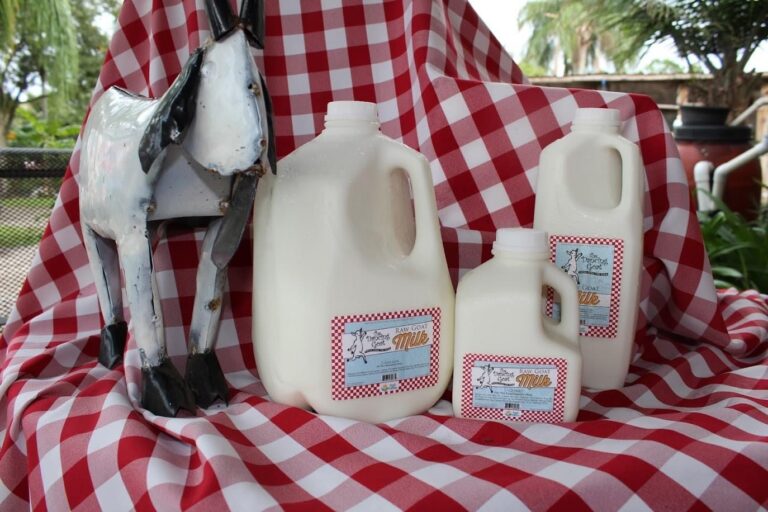Grass Fed Goats – The Florida Myth
I see it thrown around all the time …. and I get the phone calls daily…..”Do you have grass fed goat milk?” First, goats are NOT grazers. goats eat from the 12-18 inch level and are foragers – read that as they prefer weeds and brush to grass! If you hear grass fed in Florida, run! We have really crappy grass, and not because of the manure being dropped by the animals. It is because the grass is not nutrient dense to provide the appropriate sustenance for a lactation – goat or cow. Go to farther north (N. GA and above) and you will find alfalfa fields (actually a legume, not a grass but a forage) that goats love. University of Florida has been experimenting for years looking for a strain of alfalfa that will thrive in Florida to no avail.
What do we feed our goats? Sure there is grass in their paddocks. They don’t eat it unless we starve them. Our dry goats are on pasture – so why do I have to mow that pasture? Give a 5 yr old kid (two legged, that is) a bag of candy and see if they say they would rather have a balanced meal? I would wager that 90% of the kids would eat the candy. Same with goats – weeds are their candy!
If not grass, then what? Our goats get room service…….excuse me, stall service, to make sure they get a balance diet to stay healthy and make milk. Only the most optimum nutritional items are offered to them. They have grass hay which may be under the names of bahia, coastal or Tifton, all names for the grass hays, in front of them 24/7. This is very important to keep their rumen* working in tip top condition. They are also given peanut hay at am and pm feedings to give them way more nutrition than the grass hay can provide. However, if I left the peanut hay in front of them 24/7, they would be very over conditioned (the livestock way for saying FAT). The crude protein content of perennial peanut hay (a rhizome ground cover, not a legume that grows peanuts) is 13-18% and what puts milk in the bucket. It provides a very digestible and nutritious forage – yes forage, though the term perennial peanut hay is mostly used – that goats adore. In addition, when on the milk stand they get natural grains with minerals and vitamins added. Without grain, they would not maintain a lactation. We follow the Weston A Price 1% of body weight suggestion. We supplement bananas for their treats. Some like the peels. Some like the meat of the banana and some will eat the whole thing. They get pumpkins seasonally. Banana leaves are a big hit. And did I mention animal cookies? Want to get on their good side? Show up with a bag of animal cookies and you have friends for life! Doritos work too and they adore granola bars. No tin cans are offered…and if you haven’t caught on by now, goats do not eat tin cans or everything they see. They have a texture response and have to “mouth” everything but they really don’t eat it. We do supplement with vitamin E and selenium injections a couple times a year. Florida is a selenium deficient state and we feed Florida hays so the extra selenium is needed.
We use all holistic measures as a first reaction. Our use of conventional meds is minimal and not without much consideration and evaluation. We practice three times the suggested milk withdrawal times anytime used. And if antibiotics on a lactating goat, they are pulled from the milkline and most likely will not return during that lactation. I am not going to tell you we are organic because if we were feeding organic grains, the goat milk would be almost twice the price. If you find goat milk at our price and they represent it as organic, be sure to really question it. We may be non-profit, but we need to keep our price consistent with the cost of feed.



